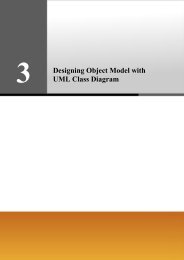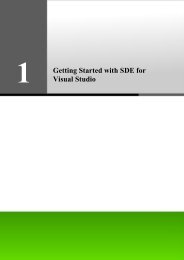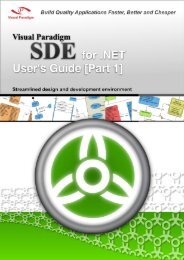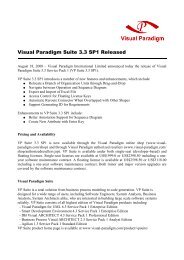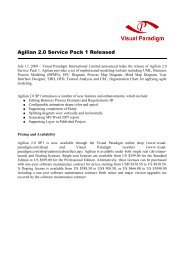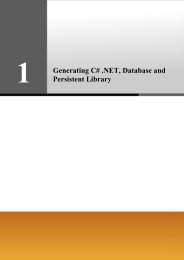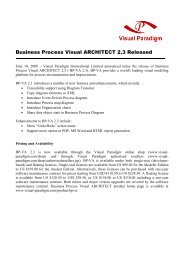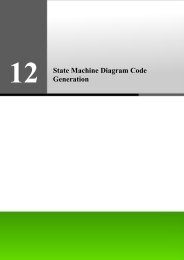Chapter 18 - Data Model - Visual Paradigm
Chapter 18 - Data Model - Visual Paradigm
Chapter 18 - Data Model - Visual Paradigm
You also want an ePaper? Increase the reach of your titles
YUMPU automatically turns print PDFs into web optimized ePapers that Google loves.
SDE-VS User’s Guide (Part 2, for ORM) <strong>Chapter</strong> <strong>18</strong> –<strong>Data</strong> <strong>Model</strong><br />
<strong>18</strong>-16<br />
• Using Resource-Centric Interface<br />
1. Click on an entity, a group of valid editing resources are displayed around the entity.<br />
2. Click the resource of "One-to-One Relationship - > Partial Table".<br />
Figure <strong>18</strong>.37 - "One-to-One Relationship -> Partial Table" resource-centric<br />
• Split Table dialog box is displayed.<br />
Figure <strong>18</strong>.38 - Split Table dialog<br />
1. Edit the New Partial Table Name, select the columns from the list of Original to Partial, and click OK.<br />
An entity stereotyped as Partial is created.<br />
Figure <strong>18</strong>.39 - The split entities with one-to-one relationship<br />
Converting to a Partial Table<br />
You can convert an entity to a Partial Table in a one-to-one identifying relationship.<br />
1. Right-click on the entity, select Convert to Partial Table from the pop-up menu.<br />
Figure <strong>18</strong>.40 - Convert to a partial table



